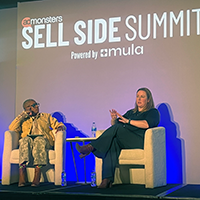Marketing truisms hold that it is far less expensive to retain a customer than engage a prospect, and that house files are considerably more valuable than outside lists. Yet 70% of marketers say fewer than one in five of their employees focus on retention, and 60% allocate less than 20% of their marketing budgets to retention activities.
The disconnect comes from marketers being disingenuous about their views on loyalty. "There is a big difference between saying the customer is at the center of the universe and actually putting the customer at the center of the universe," says Tim Suther, CMO and senior VP of Acxiom, which along with Loyalty 360 coordinated a survey of marketers' loyalty activities.
"They're not really putting the customer at the center of the universe if all they do is grounded in moving product by the ton," Suther continues. "There is an almost immediate gratification in the thrill of closing a sale. But it takes time to see how valuable that relationship is."
The measurements firms rely on to indicate marketing success can reflect the short-term, prospect-focused view. A marketing department rewarded for bringing in new accounts, or metrics rooted in campaign-focused efforts will not have the same focus on retention as a company that rewards value increases in customer portfolio, or engagement, or a rise in customers' willingness to be advocates, Suther adds.
Fifty two percent of those surveyed cite budget limitations as a barrier to customer-focused activities, while just under 50% mention a lack of IT support or a lack of the correct tools. Thirty five percent say the lack of know-how and expertise thwarts their efforts, while 22% indicate they don't have management's support for such efforts.
The lack of resources devoted to loyalty is reflected in customer knowledge. Just under half of marketers surveyed can identify their most loyal customers, and only a similar amount feel their retention efforts are working.
Is it possible that the survey reflects coming out of a recessionary time, and the focus on prospecting is emblematic of a marketing community that had curtailed its prospecting activities seeking to replenish its customer pool?
Probably not. "As long as organizations continue to have short-term pressures and [evaluate] successes based on how many products get moved, or how individual media choices perform, you are going to see these results," Suther says. "Maybe [in the future] it won't be 60% of respondents spending less than 20% on retention. Maybe that'll move all the way down to 57%." But the basic trend will continue, he continues.
Suther's grim confidence is supported by the survey's finding that only half of marketers asked could identify their best customers, and know the best way to get them to engage with the brand. Not being customer-centric works in only a few instances, he notes. A Wal-Mart can compete on the everyday low price front, while a company like Apple could primarily rely on product design and innovation, and a Nordstrom could build a reputation based on outstanding customer service.
"But the firms that go down that path [successfully] are not going to be very many, and there is an enormous imperative for companies to really take it seriously when they say customers are at the center of all they do," he adds.
One of the most important loyalty-driving activities a company can undertake is acquiring the right customers to begin with. Those brought in as a result of significant discounts will not only continue to expect those discounts, but will be susceptible to another brand offering similar discounts, Suther says.
Bringing in customers who are more likely to have an affinity for the brand will also make using predictive analytics easier. Looking back at which customers defected and attempting to win them back is a justifiable activity, but a better one is understanding the warning signs of potential defection, such as decreases in purchase amount or frequency, and taking corrective steps.
In some cases it helps to understand the total amount a customer spends in a category, and whether a brand is retaining or increasing its share of that amount.
All this, Suther says, is another spin on the same basic idea – companies that have the customer at the center of all they do, and measure success by focusing on examining changes to the value and worth of that customer, can do great things with their loyalty efforts.



